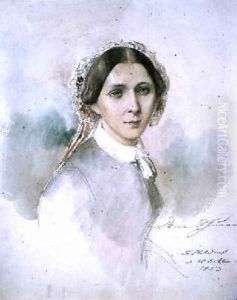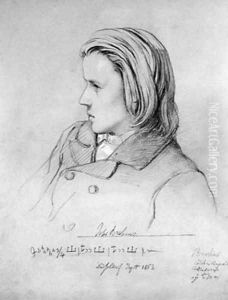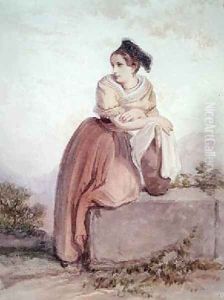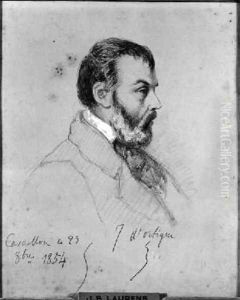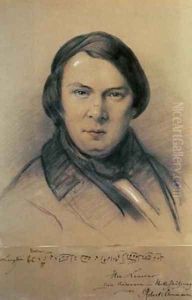Jean Joseph Bonaventure Laurens Paintings
Jean Joseph Bonaventure Laurens was a pivotal figure in the 19th-century French art scene, whose life and career spanned the turbulent years of the French Revolution, the Napoleonic era, and into the throes of the Industrial Revolution. Born on July 28, 1801, in Carpentras, France, Laurens developed an early passion for the arts, which was nurtured by the rich cultural heritage of his surroundings. His early years were marked by a classical education, which laid the foundation for his artistic pursuits.
Laurens's career was a testament to his versatility and mastery across different artistic mediums, including painting, sculpture, and engraving. However, he is perhaps best remembered for his remarkable contributions to religious and historical painting, where his work reflected a deep engagement with the themes of faith, humanism, and the social issues of his time. His artistic journey was also significantly influenced by his travels across Europe, particularly in Italy, where he was deeply inspired by the Renaissance masters.
Throughout his career, Laurens was an active participant in the Parisian art world, regularly exhibiting his works at the Salon, the official art exhibition of the Académie des Beaux-Arts in Paris. His commitment to his craft earned him numerous accolades and the respect of his peers. Laurens's work was characterized by a meticulous attention to detail, a profound sense of composition, and a vibrant use of color, which together created a sense of depth and emotion that was both powerful and poignant.
Despite the acclaim, Laurens's life was not without its challenges. The shifting political and social landscapes of France, particularly the upheavals of the 1848 Revolution, had a profound impact on his work and worldview. Yet, through these tumultuous times, Laurens remained steadfast in his belief in the power of art to reflect and shape the human experience.
Jean Joseph Bonaventure Laurens passed away on October 5, 1890, leaving behind a legacy that was not only marked by his artistic achievements but also by his contribution to the cultural and intellectual life of France. Today, his works can be found in museums and collections across the world, continuing to inspire and move audiences with their beauty and depth.
